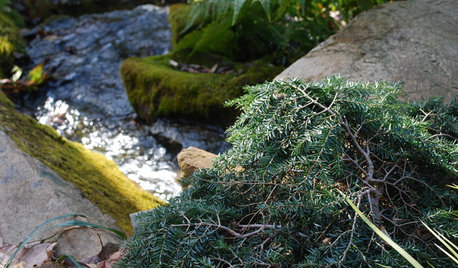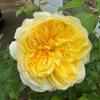A bunch of questions for rose growers
strawchicago z5
12 years ago
Related Stories

WINTER GARDENINGPruning Secrets for Exquisite Roses
Encourage gorgeous blooms year after year with this time-tested advice on how to prune your rosebush in winter for health and shape
Full Story
GARDENING GUIDES6 Captivating Roses for an Alluringly Fragrant Garden
Perfume your garden with aromas from richly spicy to lightly sweet, without sacrificing an inch of color
Full Story
GARDENING GUIDESWhat Kind of Roses Should You Grow?
Want to add the beauty of roses to your garden? Find out which ones, from old-fashioned to modern, are right for you
Full Story
GARDENING GUIDES6 Wonderfully Easy Roses for Any Gardener
Look like an expert even if you're just starting out, with these low-maintenance gems of the rose world
Full Story
DECLUTTERINGClutter vs. Keepers: A Guide to New Year's Purging
Simple questions to get in touch with your clutter comfort level — and figure out what needs to go
Full Story
SUMMER FRUITS AND VEGETABLESHow to Grow Your Own Fresh, Sweet Corn
Here's how to plant and care for your own mini cornfield
Full Story
MOST POPULARSummer Crops: How to Grow Sunflowers
Savor snack-tastic sunflower seeds once the radiant blooms have faded — if the birds have saved you any, that is
Full Story
TASTEMAKERSWorld of Design: Where Color Trends Begin
Colors go in and out of vogue. Here’s how they make their way into our home decor
Full Story
GARDENING GUIDESGreat Design Plant: Tsuga Canadensis ‘Bennett’
Bennett Canadian hemlock thrives in shade and provides sculptural interest in eastern U.S. gardens
Full Story
HOUZZ TOURSMy Houzz: Hard Work Pays Off in a DIY Cottage Renovation
First-time homeowners roll up their sleeves and give their midcentury Montreal home an infusion of style and personality
Full StoryMore Discussions










karl_bapst_rosenut
jacqueline9CA
Related Professionals
Milwaukee Landscape Architects & Landscape Designers · San Juan Landscape Architects & Landscape Designers · Bell Gardens Landscape Contractors · Canyon Lake Landscape Contractors · Clayton Landscape Contractors · Fairview Landscape Contractors · Hendersonville Landscape Contractors · Lake Saint Louis Landscape Contractors · Madera Landscape Contractors · Medford Landscape Contractors · Ocoee Landscape Contractors · Oviedo Landscape Contractors · River Ridge Landscape Contractors · Roswell Landscape Contractors · Greenfield Landscape Contractorsmichaelg
karl_bapst_rosenut
roseseek
nanadollZ7 SWIdaho
strawchicago z5Original Author
michaelg
flaurabunda